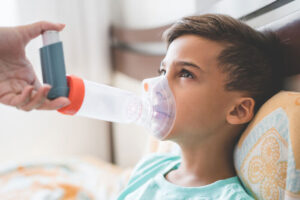
Asthma is characterized by the class it is designated. Asthma is categorized as follows: mild intermittent, mild persistent, moderate persistent, and severe persistent. The classification depends on how often one experiences symptoms, how often symptoms are causing nighttime awakenings, if the symptoms are disrupting normal activities, and how often one uses their rescue inhalers. In addition to these categories, asthma can also be classified as exercise-induced asthma, cough-variant asthma, nocturnal asthma, occupational asthma, asthma with associated COPD (i.e., chronic obstructive pulmonary disease), cardiac asthma (i.e., not actually asthma but congestive heart failure and other heart disease that masquerades as asthma since the symptoms are very similar to asthma), allergic asthma (i.e., an older classification which is not used anymore), nonallergic asthma (i.e., an older classification which is not used anymore).
In addition to asthma, there are several conditions that mimic asthma in its presentation and some of them are as follows: cardiac asthma (mentioned above), vocal cord dysfunction and/or paralysis, GERD (i.e., gastroesophageal reflux disease), sinusitis, upper respiratory tract infections (i.e., URI’s), COPD (e.g., chronic bronchitis, emphysema), bronchiectasis, cystic fibrosis, thyroid gland tumors, lung or chest tumors, pulmonary embolism, anxiety, pneumonia, and food aspiration.
The diagnosis of asthma requires a comprehensive history and physical examination in conjunction with a pulmonary function test. Additional measures may be needed depending on the history and physical examination and may include allergy skin or blood tests, chest X-ray, other types of bloodwork, sweat chloride test, CT scans, and others. The treatment of asthma is catered to each specific patient based on the frequency and severity of their symptoms. A host of medications may be utilized and range from just a rescue inhaler (i.e., short acting beta 2 inhalers) for intermittent asthma to biologicals (i.e., Xolair, Fasenra, Nucala) for more moderate-to-severe cases. Other therapeutics utilized to treat asthma may include inhaled corticosteroids, long acting beta 2 inhalers, combination inhalers of corticosteroids and long acting beta 2 inhalers, leukotriene antagonists (e.g., Singulair, Accolate, Zyflo), methylxanthines (e.g., theophylline), and oral corticosteroids. The prevention of asthma symptoms can usually be achieved through allergy immunotherapy (i.e., allergy shots, allergy injections, allergy hyposensitization, allergy desensitization) as well as to attempt to avoid triggers that can exacerbate one’s asthma.
The board certified allergists at Black & Kletz Allergy have had more than 50 years of experience in diagnosing and treating asthma in the Washington, DC, Northern Virginia, and Maryland metropolitan area. We treat both children and adults and have office locations in Washington, DC, McLean, VA (Tysons Corner, VA), and Manassas, VA. We offer on-site parking at all of our office locations. The Washington, DC and McLean, VA offices are also Metro accessible. We offer a free shuttle that runs between our McLean, VA office and the Spring Hill metro station on the silver line. To schedule an appointment, please call one of our offices or alternatively you may click Request an Appointment and we will respond within 24 hours by the next business day. The allergy doctors at Black & Kletz Allergy are happy to help you diagnose and treat your asthma as well as any other allergy-related or immunological condition that you might have.


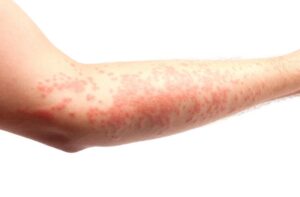
 Why do we cough? Coughing is a natural defense mechanism to expel excessive mucus, microbes, and irritant substances from our airways which acts to protect our lungs from the potential damage caused by them. Coughing, however, can also be a bothersome symptom and is one of the most common reasons why patients consult their doctors. The sound of a cough is produced after forcible expiration (i.e., breathing out) against a closed glottis (i.e., voice box) as the air flows out when the glottis suddenly opens. A cough is defined as “acute” when it persists for less than 3 weeks, subacute when the duration is between 3 and 8 weeks, and chronic if it continues to be present for longer than 8 weeks.
Why do we cough? Coughing is a natural defense mechanism to expel excessive mucus, microbes, and irritant substances from our airways which acts to protect our lungs from the potential damage caused by them. Coughing, however, can also be a bothersome symptom and is one of the most common reasons why patients consult their doctors. The sound of a cough is produced after forcible expiration (i.e., breathing out) against a closed glottis (i.e., voice box) as the air flows out when the glottis suddenly opens. A cough is defined as “acute” when it persists for less than 3 weeks, subacute when the duration is between 3 and 8 weeks, and chronic if it continues to be present for longer than 8 weeks.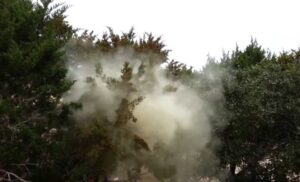 Historically, March is the month that many trees begin pollinating in the Washington, DC metropolitan area. This year, trees have begun to pollinate in February, as the temperatures in the metro area have been higher than normal for a typical Winter. We will begin to see tree pollen marked by a yellowish coating on our automobiles soon. For many allergic individuals, this represents a tumultuous time for those who are sensitized to tree pollen. Birch, cedar, ash, oak, elm, cottonwood, hickory, and maple are the predominant trees producing pollen in our area during the Spring. This time of the year is the reproductive season for the trees. As a result, the tree pollen grains are released into the atmosphere in order to fertilize the ovules of other trees. This process is called pollination. Pollen is produced and then dispersed by the wind throughout the day, however, the tree pollen counts are highest during the morning hours.
Historically, March is the month that many trees begin pollinating in the Washington, DC metropolitan area. This year, trees have begun to pollinate in February, as the temperatures in the metro area have been higher than normal for a typical Winter. We will begin to see tree pollen marked by a yellowish coating on our automobiles soon. For many allergic individuals, this represents a tumultuous time for those who are sensitized to tree pollen. Birch, cedar, ash, oak, elm, cottonwood, hickory, and maple are the predominant trees producing pollen in our area during the Spring. This time of the year is the reproductive season for the trees. As a result, the tree pollen grains are released into the atmosphere in order to fertilize the ovules of other trees. This process is called pollination. Pollen is produced and then dispersed by the wind throughout the day, however, the tree pollen counts are highest during the morning hours.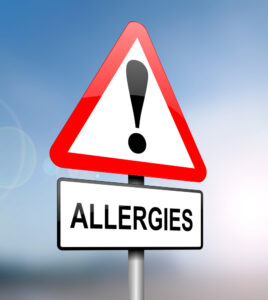
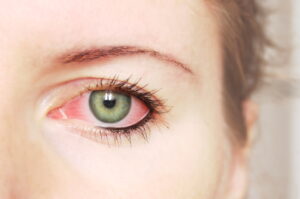 Keratoconjunctivitis is term used to describe inflammation of the cornea and conjunctiva. Keratitis specifically is the inflammation of the cornea (i.e., the transparent dome that covers the pupil and the iris of the eye). Conjunctivitis, on the other hand, is the inflammation of the conjunctiva . It is more commonly referred to as “pink eye.” Keratoconjunctivitis is one of the most common causes of red and irritated eyes as millions of individuals visit doctors for this condition every year.
Keratoconjunctivitis is term used to describe inflammation of the cornea and conjunctiva. Keratitis specifically is the inflammation of the cornea (i.e., the transparent dome that covers the pupil and the iris of the eye). Conjunctivitis, on the other hand, is the inflammation of the conjunctiva . It is more commonly referred to as “pink eye.” Keratoconjunctivitis is one of the most common causes of red and irritated eyes as millions of individuals visit doctors for this condition every year.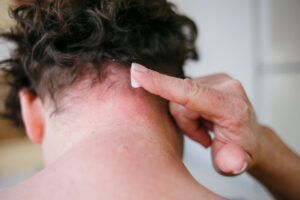 What are some of the causes?
What are some of the causes? Twenty percent of the U.S population have cat allergies and 10% of the population have dog allergies. In the U.S., the most common pet are dogs, which are followed by cats as the second most common pet. Approximately 70% of homes having at least one pet. This is a higher percentage of homes with pets than in the past as more and more families are acquiring pets. In addition to cats and dogs, some other common pets include birds (e.g., parakeets, parrots), fish, rabbits, rodents (e.g., guinea pigs, hamsters, gerbils, chinchillas, rats, mice) reptiles (e.g., snakes, lizards, turtles, geckos), hermit crabs, ferrets, horses, and spiders. Horses normally do not live in people’s homes, but they may be rather allergenic. In recent years, there is a fad of owning miniature horses which in some cases do live in their owner’s house. This is probably not a good idea in general, but for those who are allergic to horses, it is especially unwise.
Twenty percent of the U.S population have cat allergies and 10% of the population have dog allergies. In the U.S., the most common pet are dogs, which are followed by cats as the second most common pet. Approximately 70% of homes having at least one pet. This is a higher percentage of homes with pets than in the past as more and more families are acquiring pets. In addition to cats and dogs, some other common pets include birds (e.g., parakeets, parrots), fish, rabbits, rodents (e.g., guinea pigs, hamsters, gerbils, chinchillas, rats, mice) reptiles (e.g., snakes, lizards, turtles, geckos), hermit crabs, ferrets, horses, and spiders. Horses normally do not live in people’s homes, but they may be rather allergenic. In recent years, there is a fad of owning miniature horses which in some cases do live in their owner’s house. This is probably not a good idea in general, but for those who are allergic to horses, it is especially unwise.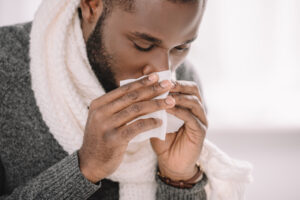 As we are in the Fall season and approaching Winter, many individuals may experience a clear runny nose, post-nasal drip, sneezing, sore throat, nasal congestion, sinus pressure, headache, coughing, and/or fatigue. The question to many becomes, “Do I have a common cold or do I have Fall/Winter allergies? It is a common question to an even more common complaint. How does someone know if they are having allergies rather than the common cold? Well, if someone does not have a history of
As we are in the Fall season and approaching Winter, many individuals may experience a clear runny nose, post-nasal drip, sneezing, sore throat, nasal congestion, sinus pressure, headache, coughing, and/or fatigue. The question to many becomes, “Do I have a common cold or do I have Fall/Winter allergies? It is a common question to an even more common complaint. How does someone know if they are having allergies rather than the common cold? Well, if someone does not have a history of  A mast cell is a component of the immune system that is involved in the allergic response. Mast cells contain histamine and other chemical mediators. These chemicals are released into the bloodstream and then into the surrounding tissues during an allergic reaction.
A mast cell is a component of the immune system that is involved in the allergic response. Mast cells contain histamine and other chemical mediators. These chemicals are released into the bloodstream and then into the surrounding tissues during an allergic reaction.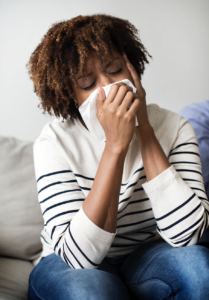 Dust is a very common allergen which can cause havoc among sensitized individuals. Most people are not aware that the cause of dust allergies are dust mites. Dust mites are microscopic animals belonging to the class Arachnida. Arachnids are arthropods which are
Dust is a very common allergen which can cause havoc among sensitized individuals. Most people are not aware that the cause of dust allergies are dust mites. Dust mites are microscopic animals belonging to the class Arachnida. Arachnids are arthropods which are 

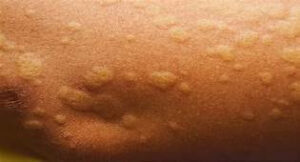
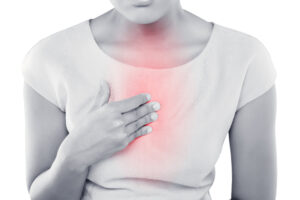 Proton pump inhibitors (PPIs) are a group of medications commonly used to treat symptoms caused by excessive stomach acid. The most common PPIs available in the U.S. are Nexium (i.e., esomeprazole), Protonix (i.e., pantoprazole), Prilosec (i.e., omeprazole), Prevacid (i.e., lansoprazole), Aciphex (i.e., rabeprazole), and Dexilant (i.e., dexlansoprazole). These medications act by reducing the amount of acid secretion produced by the parietal cells in the lining of the stomach. In addition to lifestyle and dietary modifications, they are usually the first line medications prescribed to treat common conditions such as gastroesophageal reflux disease (GERD),
Proton pump inhibitors (PPIs) are a group of medications commonly used to treat symptoms caused by excessive stomach acid. The most common PPIs available in the U.S. are Nexium (i.e., esomeprazole), Protonix (i.e., pantoprazole), Prilosec (i.e., omeprazole), Prevacid (i.e., lansoprazole), Aciphex (i.e., rabeprazole), and Dexilant (i.e., dexlansoprazole). These medications act by reducing the amount of acid secretion produced by the parietal cells in the lining of the stomach. In addition to lifestyle and dietary modifications, they are usually the first line medications prescribed to treat common conditions such as gastroesophageal reflux disease (GERD), 









